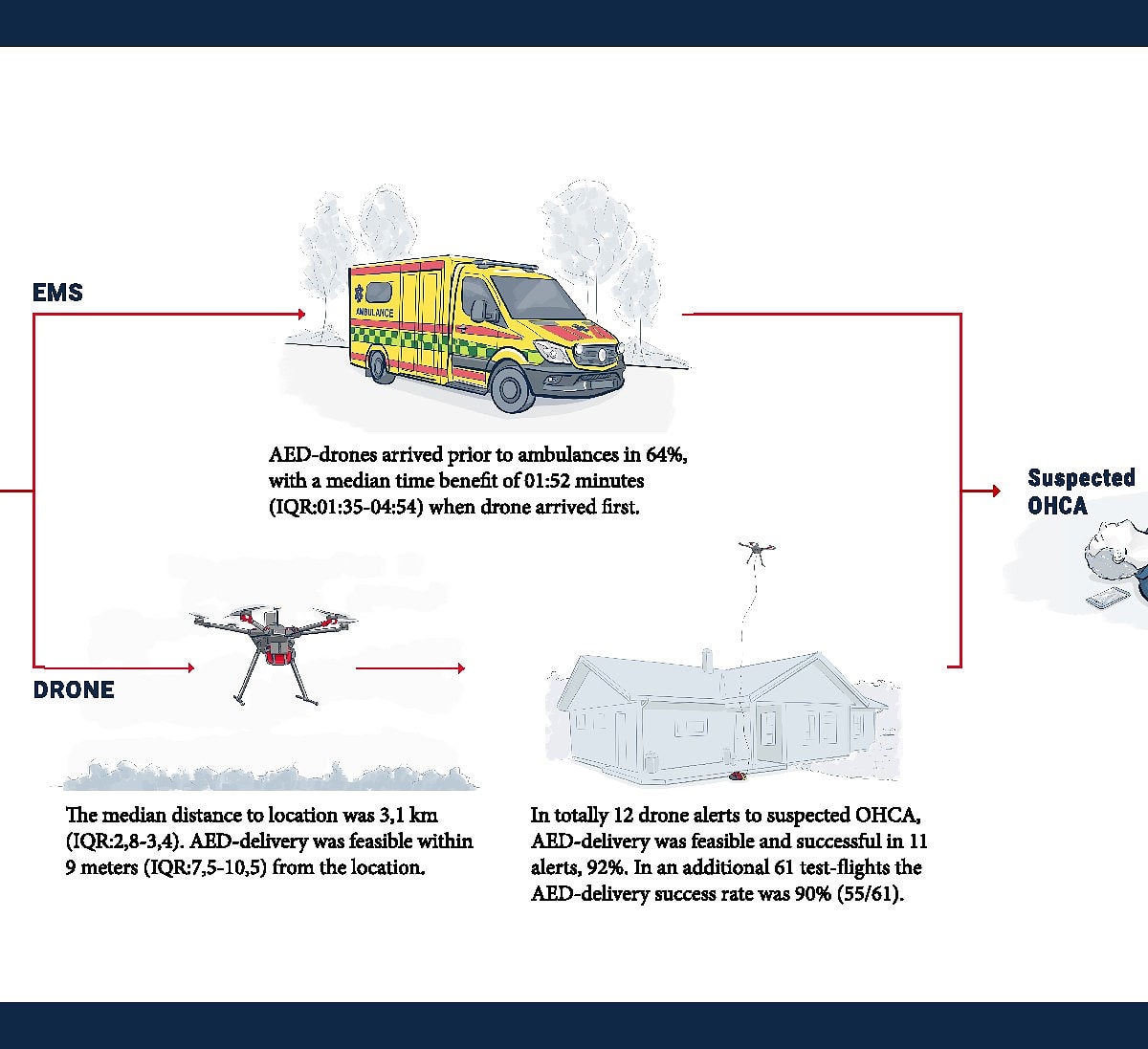By Ahmed El-Medany
A prospective pilot study by Schierbeck et al (2021), presented at ESC 2021, investigated the practicality of drone-delivered automatic external defibrillators (AEDs) in cases of out-of-hospital cardiac arrest (OHCA).
Three AED-equipped drones were placed within controlled airspace in Sweden, covering approximately 80,000 inhabitants (125 km2). Drones were integrated in the emergency medical services for automated deployment. The primary outcome was the proportion of successful AED deliveries when drones were dispatched in cases of suspected OHCA. Secondary outcomes included the proportion of cases where AED drones arrived prior to an ambulance. 14 cases (12 alerts) were eligible for dispatch during the study period, with a median distance to location of 3.1 km. AED delivery was feasible within 9 metres from the location and successful in 11 alerts (92%). AED drones arrived prior to an ambulance in 64% of cases, with a median time benefit of 01:52 min. In an additional 61 test flights, the AED delivery success rate was 90% (55/61).
References:
Schierbeck S, Hollenberg J, Nord A, Svensson L, Nordberg P, Ringh M, Forsberg S, Lundgren P, Axelsson C, Claesson A. Automated external defibrillators delivered by drones to patients with suspected out-of-hospital cardiac arrest. European Heart Journal. 2021 Aug 26.
Figure 1: taken from the European Heart journal. Emergency services are alerted by the dispatch centre, with subsequent deployment of a drone equipped with an AED for response to suspected OHCA.

